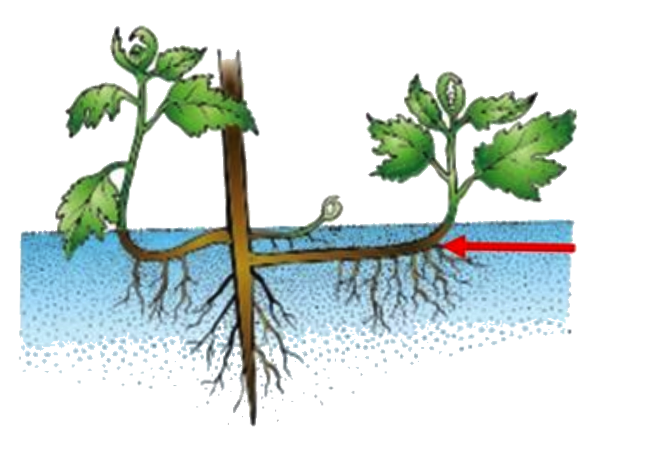How do the various leaf modifications help plants?
Step-by-Step Solution:
1. Understanding the Basic Function of Leaves:
- The primary role of leaves in plants is to perform photosynthesis, which involves using sunlight, carbon dioxide, and water to produce sugars.
Hint: Recall that photosynthesis is essential for plant energy and growth.
2. Leaf Modifications Overview:
- Leaves can undergo various modifications to serve different functions beyond photosynthesis.
Hint: Think about how adaptations help plants survive in their environments.
3. Tendrils:
- Some leaves modify into tendrils, which are coiled structures that provide support to climbing plants.
- Example: Pea plants (Pisum sativum) use tendrils to support their growth.
Hint: Consider how climbing plants might need extra support to reach sunlight.
4. Spines:
- In some plants, leaves transform into spines for protection.
- Example: Cacti have spines that deter herbivores and protect the plant from being eaten.
Hint: Think about how plants defend themselves against animals that might want to consume them.
5. Phyllodes:
- In certain species, leaves can develop into flattened green structures called phyllodes.
- Example: Australian Acacia has phyllodes that arise from the petiole and assist in photosynthesis.
Hint: Reflect on how some plants adapt their leaves to optimize light capture.
6. Pitchers:
- Some insectivorous plants have leaves that form pitcher shapes, which trap insects.
- These pitchers contain digestive juices that help break down the insects, allowing the plant to absorb nutrients like nitrogen.
Hint: Consider how nutrient-poor environments might lead to unique adaptations for nutrient acquisition.
7. Conclusion:
- Various leaf modifications serve critical functions such as support, protection, enhanced photosynthesis, and nutrient acquisition, allowing plants to thrive in diverse environments.
Hint: Summarize how each modification contributes to the plant's survival and growth.
- The primary role of leaves in plants is to perform photosynthesis, which involves using sunlight, carbon dioxide, and water to produce sugars.
- Leaves can undergo various modifications to serve different functions beyond photosynthesis.
- Some leaves modify into tendrils, which are coiled structures that provide support to climbing plants.
- Example: Pea plants (Pisum sativum) use tendrils to support their growth.
- In some plants, leaves transform into spines for protection.
- Example: Cacti have spines that deter herbivores and protect the plant from being eaten.
- In certain species, leaves can develop into flattened green structures called phyllodes.
- Example: Australian Acacia has phyllodes that arise from the petiole and assist in photosynthesis.
- Some insectivorous plants have leaves that form pitcher shapes, which trap insects.
- These pitchers contain digestive juices that help break down the insects, allowing the plant to absorb nutrients like nitrogen.
- Various leaf modifications serve critical functions such as support, protection, enhanced photosynthesis, and nutrient acquisition, allowing plants to thrive in diverse environments.
Topper's Solved these Questions
- MORPHOLOGY OF FLOWERING PLANTS Book:ICSEChapter:MORPHOLOGY OF FLOWERING PLANTS Exercise:Ncert Exercises (Differentiate Between )
Explore 21 Videos
- MORPHOLOGY OF FLOWERING PLANTS Book:ICSEChapter:MORPHOLOGY OF FLOWERING PLANTS Exercise:REVIEW QUESTIONS (I. MULTIPLE CHOICE QUESTIONS)
Explore 24 Videos
- MORPHOLOGY OF FLOWERING PLANTS Book:ICSEChapter:MORPHOLOGY OF FLOWERING PLANTS Exercise:Test Your Progress (HOTS)
Explore 4 Videos
- MORPHOLOGY AND ANATOMY OF DIFFERENT SYSTEM OF COCKROACH Book:ICSEChapter:MORPHOLOGY AND ANATOMY OF DIFFERENT SYSTEM OF COCKROACH Exercise:Long Answer type Questions
Explore 6 Videos
- NEURAL CONTROL AND CO-ORDINATION Book:ICSEChapter:NEURAL CONTROL AND CO-ORDINATION Exercise:NCERT EXERCISES WITH ANSWER (DIFFERENTIATE BETWEEN)
Explore 11 Videos
Similar Questions
Pick up the leaf modification
View SolutionNepenthes (commonly called as pitcher plant), an insectivorous plant usually grows in marsh lands. Which part of the plant is modified into a 'pitcher'? How does this modification help the plant for food even though it can photosynthesize like any other green plant?
View SolutionA modification of leaf is
View SolutionDescribe various modifications of the leaf.
View SolutionWhich of the following is not a modification of plant organ for arid region?
View SolutionWhat is the epidermal cell modification in plants which prevent water loss ?
View SolutionWhich of these plants have a modification of stem as indicated by the red arrow , in this diagram ?

View SolutionAssertion :- Plant show various kind of root modification.
Reason :- Root modification helps in support , food storage and respiration.
View SolutionWrite about any two leaf modifications which perform special functions.
View SolutionDescribe the modifications found in the following plants :
Pitcher plant
View Solution